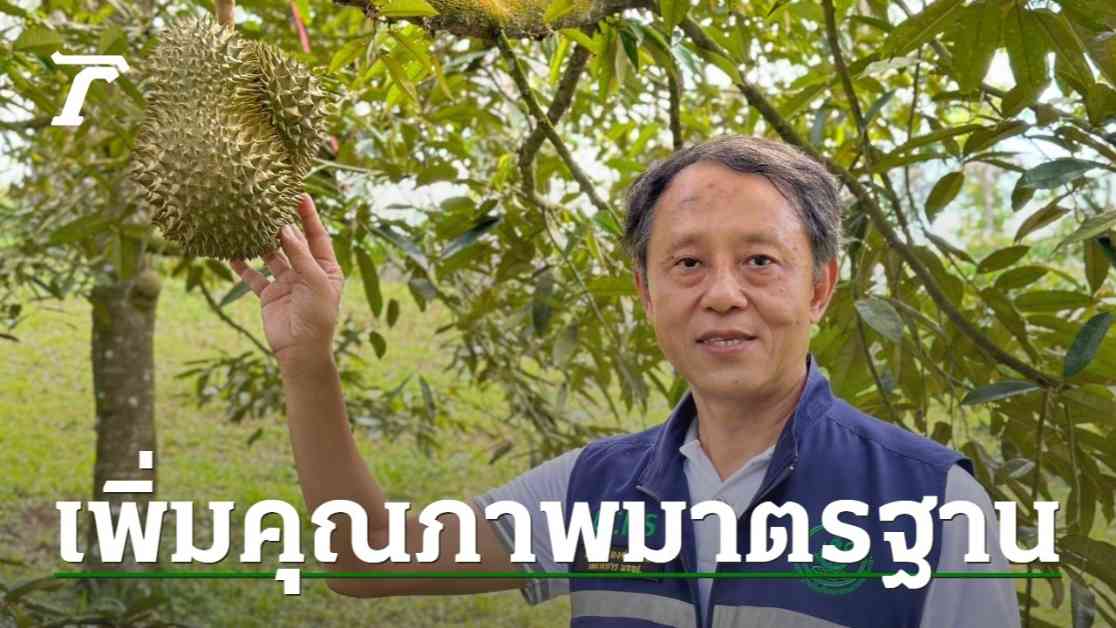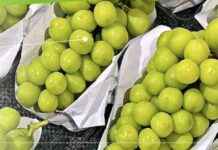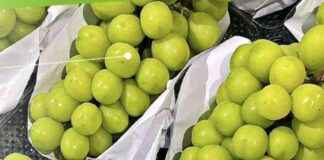Revitalizing Durian Production in Chumphon Province to Boost Export Potential
The Ministry of Agriculture and Cooperatives has issued directives to enhance durian production in Chumphon Province, aligning with the guidelines set forth in the Ministry’s regulation 9070 of 2566. This initiative aims to improve the quality of durians for export, with local entrepreneurs readily embracing the challenge. On August 16, 67, Mr. Pisan Pongsanit, Secretary-General of the National Bureau of Agricultural Commodity and Food Standards (ACFS), revealed that the visit to the GAP-certified durian orchards and collection and packaging facilities in Chumphon Province was in line with the government’s policy. Minister of Agriculture and Cooperatives, Gen. Thammanas Phromphao, and Deputy Minister, Mr. Atthakorn Siributr, have instructed relevant agencies to prioritize the quality of fruits, particularly durians, due to their significant economic value in Thailand. Currently, there are approximately 1,054,868 acres dedicated to durian cultivation, with major plantations located in Chanthaburi, Chumphon, Rayong, Surat Thani, and Nakhon Si Thammarat provinces. Durians can be grown in all regions of the country, with exports reaching 1,094,900 tons valued at 164,787 million baht in 2566. Thailand’s top three durian export destinations are China, Hong Kong, and Malaysia. The increasing demand for durians and related products in international markets suggests a promising future for the industry.
Setting Quality Standards for Durian Production
In response to the fluctuating quality of fresh durians reaching the market, which has impacted consumer confidence, the Ministry of Agriculture and Cooperatives has established the Agricultural Product Standards for the inspection and acceptance of durians at collection and packaging facilities (ACFS 9070). These standards, enforced by ministerial regulations and published in the Royal Gazette on July 10, 67, will come into effect on July 10, 68. The regulations aim to oversee the entire production chain to ensure high-quality durians. Farmers cultivating durians must follow the practices outlined in ACFS 9001, which includes controlling water sources, suitable cultivation areas, safe agricultural chemicals usage, biological pest control, proper pre and post-harvest management, contamination prevention during transportation, correct operational practices, and maintaining traceable records. Farmers can utilize certification documents, dry matter weight analysis reports from trusted entities, or durian age records as evidence before harvesting for commercial distribution.
At the intermediate level, collection and packaging facilities must adhere to the standards set by ACFS 9001. These facilities are required to verify the farming practices of durian growers through certification of agricultural product standards, Good Agricultural Practices (GAP) certification, equivalent standard certifications, dry matter weight analysis reports, or durian age records. Upon verifying the documentation provided by farmers, the facilities will conduct external inspections to assess the durians’ physical characteristics and determine their maturity by analyzing dry matter weight before proceeding with packaging.
Capacity Building and Compliance with Standards
The ACFS, in collaboration with the Department of Agriculture, the Department of Agricultural Extension, the Office of Agricultural Economics, and other relevant agencies under the Ministry of Agriculture and Cooperatives, along with associations and private sector entities, is actively raising awareness to prepare entrepreneurs, farmers, and stakeholders to comply with the ACFS 9070 standards. A training program to enhance readiness for entrepreneurs and producers to meet the mandatory standards for inspection and acceptance of durians at collection and packaging facilities (ACFS 9070) has been conducted from April to August. The training involved 387 participants, including entrepreneurs, government officials, agricultural inspectors, farmers, and educational institutions. Additionally, an online training session was attended by 1,500 individuals.
Mr. Jittat Suwannasang, a GAP-certified durian farmer from Lang Suan District, Chumphon Province, shared his journey in transitioning towards GAP-certified durian production. Initially cultivating a mixed orchard with native durian varieties, rambutans, mangosteens, and langsat on a 20-acre land passed down through generations, Mr. Jittat eventually shifted to cultivating the popular Mon Thong durian variety over 25 years ago. His commitment to following GAP standards led to his orchard receiving GAP certification in 2547, ensuring high-quality durians that instill confidence in traders and consumers, consequently raising the selling price. Despite facing a 30-35% decrease in production due to prolonged erratic weather conditions in the 65-66 season, Mr. Jittat continues to supply durians predominantly to Chinese markets, with minor exports to Taiwan and Japan.
Ms. Thaisanok Arunrak, the owner of The Best 3310 International Fruit Company Limited, inherited the durian farming legacy from her parents and has been actively following GMP standards for the past seven years. The company purchases approximately 100 containers or an average of 17-18 tons per container of durians from local farmers. The purchased durians undergo grading into categories A, B, and C, each fetching different prices based on the market average. The company strictly procures durians from GAP-certified orchards and harvests according to provincial seasonal announcements. Any early harvesting requires dry matter weight analysis before exportation.
The company is well-prepared to meet the ACFS 9070 standards, emphasizing that all durian growers, regardless of scale, must adhere to the comprehensive standards. Ms. Thaisanok emphasizes that certifications from GAP-certified orchards are essential for the company’s procurement, ensuring adherence to all standards throughout the production process. The commitment to quality and compliance with regulations will continue to drive the company’s success in the durian export market.
In conclusion, the efforts to boost durian production in Chumphon Province and enhance export potential through GAP certification and compliance with quality standards are pivotal for the industry’s growth and sustainability. The collaboration between government agencies, private enterprises, and farmers is crucial in achieving high-quality durian production that meets international standards and consumer expectations. As Thailand continues to be a leading exporter of durians, maintaining quality, consistency, and adherence to regulations will further solidify its position in the global market. Through continuous capacity building, training programs, and strict enforcement of standards, the durian industry in Chumphon Province is poised for continued success and expansion in the international market.


















